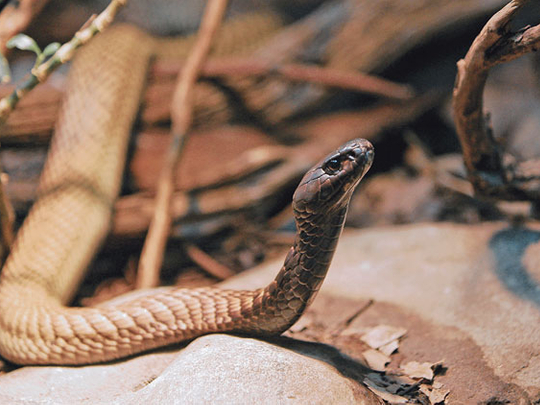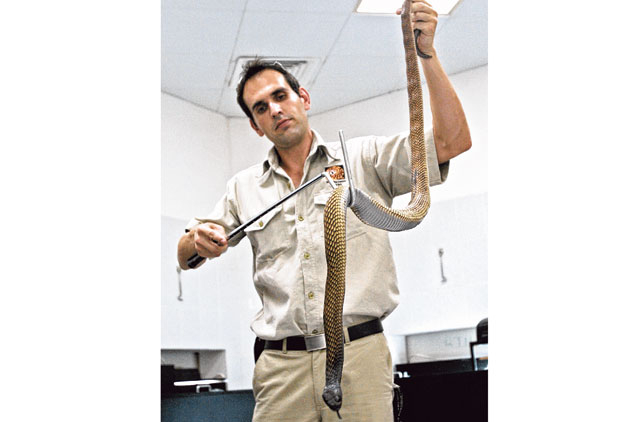
Sharjah: Excited researchers are getting their first insights into the lives of the endangered Arabian cobra after 16 hatchlings arrived earlier this month — the first time the snake has been bred in captivity.
The Arabian cobra was only classed as an individual species in 2009. Two were taken to the Sharjah Breeding Centre in 2000 and it has taken more than a decade for the male and female to reproduce.
Johannes Els, head of the herpetology and freshwater fish department at Sharjah Breeding Centre for Endangered Arabian Wildlife said the snakes' conservation value increased when it was discovered they are only found in this part of the world. "There was no data recorded about them before. Studying snakes in the wild is a long term project of at least five years and obtaining research funding is not always possible," said Els. The population in the wild is not known with any certainty either, he added, so the long term plan is to have a captive bred population.
The success of the captive breeding and subsequent laying of 19 eggs on March 14 has radically increased the possibility to study the creatures up close, though only 16 of the eggs hatched two months later.
Sedentary
"Female cobras are quite sedentary. They burrow to lay their eggs making it very difficult to find. The males moves around more. They can hide in your garden and only move if they get scared," said Els.
The captive Arabian cobras will help build up a bank of snakes whose venom can be collected and eventually used for anti-venom.
The ideal number of snakes to have for a captive breeding project is 50, said Els. "This is a very long term idea and to do it would mean introducing new genes to the pool of snakes," he said.
The 16 young snakes have been placed in their own individual enclosures to make it easier to monitor and feed them. At birth the snakes, called neonates, weighed between ten and 13g and measured 34cm on average. The mother measured 1.8m and weighed 1.2kgs and the father measures 1.4m and weighs less than 1kg.
From the first recorded birth of Arabian cobra neonates researchers can already document that these snakes can have a clutch of between 11 and 19 eggs with an incubation period of 59 to 62 days.
According to Els, before shedding their first skin the snakes are light brown with a black head and neck, and yellow with black heads afterwards.
The centre receives snakes by people who know little about them before buying one as a pet. "We get a lot of snakes and reptiles from the public dropping them off. We get exotic animals too like red-eared terrapins or recently a green iguana," said Els.
Largest snake in the Arabian peninsula
The Arabian cobra (Naja arabica) are found in the highlands of Arabia from Taif, in western Saudi Arabia, to Aden and eastwards to Dhofar. It was once classed as a subspecies of the Arabian cobra (Naja haje) in North Africa but was recognised as a full species in 2009 and is endemic to the Arabian Peninsula. It is the largest snake in the region.













